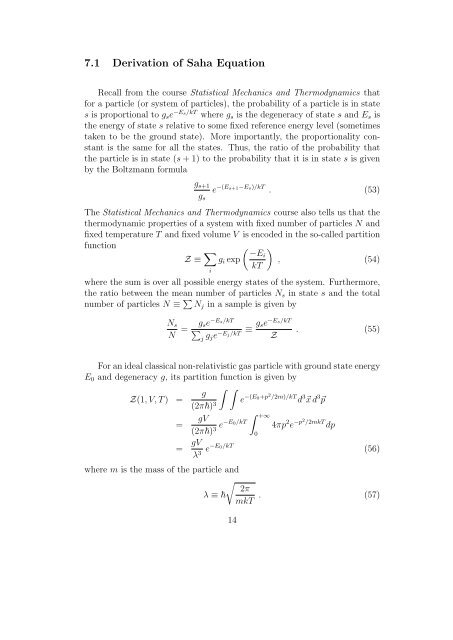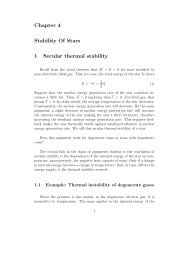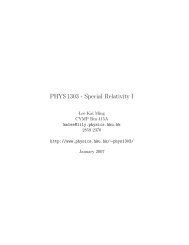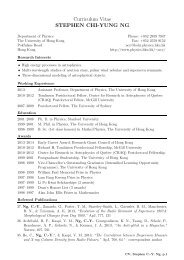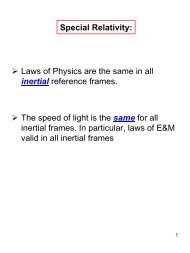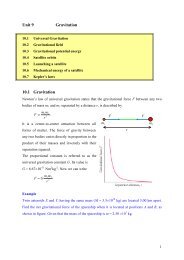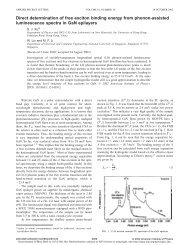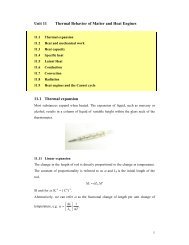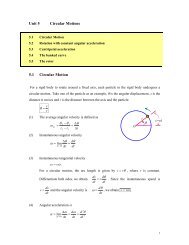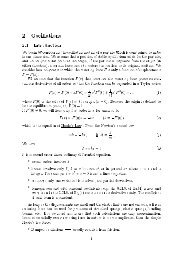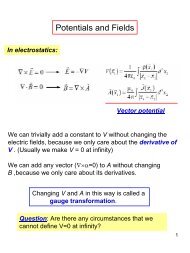Chapter 2 Stellar Structure Equations 1 Mass conservation equation
Chapter 2 Stellar Structure Equations 1 Mass conservation equation
Chapter 2 Stellar Structure Equations 1 Mass conservation equation
You also want an ePaper? Increase the reach of your titles
YUMPU automatically turns print PDFs into web optimized ePapers that Google loves.
7.1 Derivation of Saha Equation<br />
Recall from the course Statistical Mechanics and Thermodynamics that<br />
for a particle (or system of particles), the probability of a particle is in state<br />
s is proportional to g s e −E s/kT where g s is the degeneracy of state s and E s is<br />
the energy of state s relative to some fixed reference energy level (sometimes<br />
taken to be the ground state). More importantly, the proportionality constant<br />
is the same for all the states. Thus, the ratio of the probability that<br />
the particle is in state (s + 1) to the probability that it is in state s is given<br />
by the Boltzmann formula<br />
g s+1<br />
g s<br />
e −(E s+1−E s)/kT . (53)<br />
The Statistical Mechanics and Thermodynamics course also tells us that the<br />
thermodynamic properties of a system with fixed number of particles N and<br />
fixed temperature T and fixed volume V is encoded in the so-called partition<br />
function<br />
Z ≡ ∑ ( ) −Ei<br />
g i exp , (54)<br />
kT<br />
i<br />
where the sum is over all possible energy states of the system. Furthermore,<br />
the ratio between the mean number of particles N s in state s and the total<br />
number of particles N ≡ ∑ N j in a sample is given by<br />
N s<br />
N =<br />
g se −E s/kT<br />
∑<br />
j g je −E j/kT<br />
≡ g se −E s/kT<br />
Z<br />
. (55)<br />
For an ideal classical non-relativistic gas particle with ground state energy<br />
E 0 and degeneracy g, its partition function is given by<br />
∫ ∫<br />
g<br />
Z(1, V, T ) =<br />
e −(E 0+p 2 /2m)/kT d 3 ⃗x d 3 ⃗p<br />
(2π) 3<br />
=<br />
gV<br />
(2π) 3 e−E 0/kT<br />
= gV<br />
λ 3 e−E 0/kT<br />
∫ +∞<br />
0<br />
4πp 2 e −p2 /2mkT dp<br />
(56)<br />
where m is the mass of the particle and<br />
√<br />
2π<br />
λ ≡ <br />
mkT . (57)<br />
14


